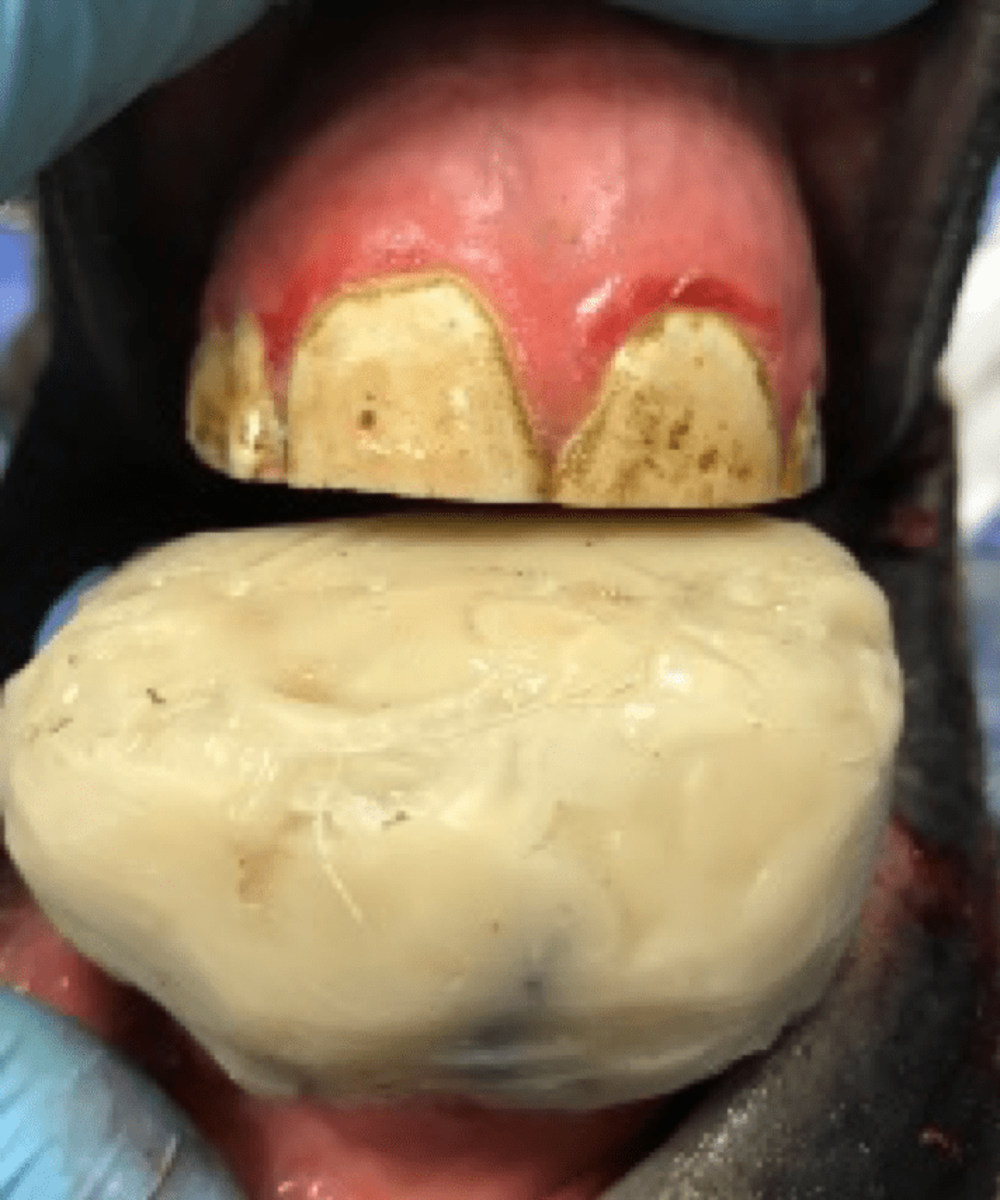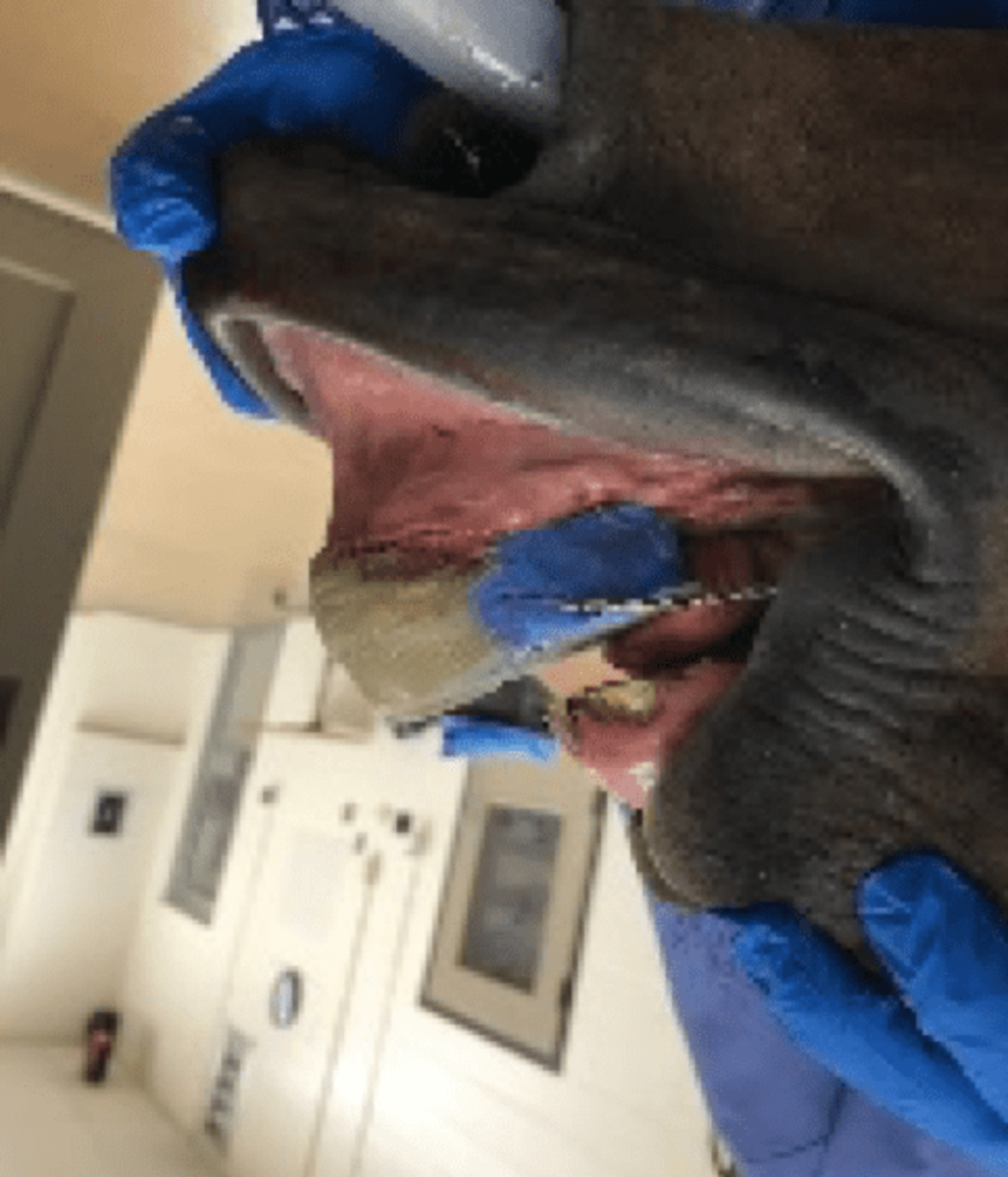Veterinarians at Rood and Riddle Equine Hospital answer your questions about sales and healthcare of Thoroughbred auction yearlings, weanlings, 2-year-olds and breeding stock.
QUESTION: Why is it important to have a veterinarian perform dental work on your horse?
DR. BRAD TANNER: Responsible horse owners have mental checklists of the things that need to be done each year for their horses. These include deworming, vaccinations, Coggins test, health certificate and of course annual floating. The annual float is a treatment for the condition of sharp enamel points. No treatment, be it antibiotics, anti-inflammatories, etc. should be administered without an examination and proper diagnosis.
Why should a dental float be any different?

Dr. Brad Tanner
The tooth of a horse continues to grow (erupt) throughout life. Those areas of the tooth that do not get worn away become long and sharp. Left to their own devices these sharp teeth may cause cuts in the cheeks and tongue (see below). These sharp teeth cause increased discomfort in performance horses as bit and bridle change head carriage which forces increased contact of these teeth with the cheek tissue. Dental floating is the necessary treatment for this common condition in the horse.
While responsible owners are correct to have their horse's teeth checked annually, the floating is not the most important thing happening — it is the exam. A proper dental exam performed by your veterinarian can provide insight into your horse's general health as well their oral health. This veterinarian has spent years of training in anatomy, physiology, medicine, surgery, imaging etc. and is equipped to recognize, diagnose and treat oral pain.
The dental examination will include assessing facial symmetry, bone enlargements, lymph nodes, draining tracts, maleruptions, malocclusions, soft tissue lacerations and abrasions. The exam will also include a close inspection of each tooth surface with a dental mirror or an oral camera. These close looks often show painful problematic teeth with cracks, fractures or feed packing that may need to be investigated with additional imaging.
Recognition of abnormal dental wear or other pathology may be indication for dental radiographs or a CT scan to further investigate problematic teeth. These imaging modalities are common practice in human medicine as the ADA (American Dental Association) recommends radiographs every couple of years, and with increased access to quality digital radiography this is also becoming more common in horses.

This image shows damage to a horse's tongue that has arisen from sharp points on the teeth. Photo courtesy Dr. Brad Tanner
Horse teeth do develop cavities and these can lead to fracture, pain, and sometimes sinus infections. These problems can be avoided with early detection and treatment. The treatment for these is cavity fillings (restorations) and can be done as a routine standing procedure. Our goal is to preserve functional occlusion of the teeth and allow continued grazing. Given the opportunity horses on pasture will graze up to 16 hours daily.
Dr. Brad Tanner received his DVM from Auburn University in 2005 and completed an internship at Rood and Riddle thereafter. He is a shareholder in the clinic, where he focuses on advanced dentistry, primary care and reproduction. Tanner became board certified in equine dentistry in 2019.
The post Ask Your Veterinarian Presented By Kentucky Performance Products: Leaving Dental Work To The Vet appeared first on Horse Racing News | Paulick Report.



